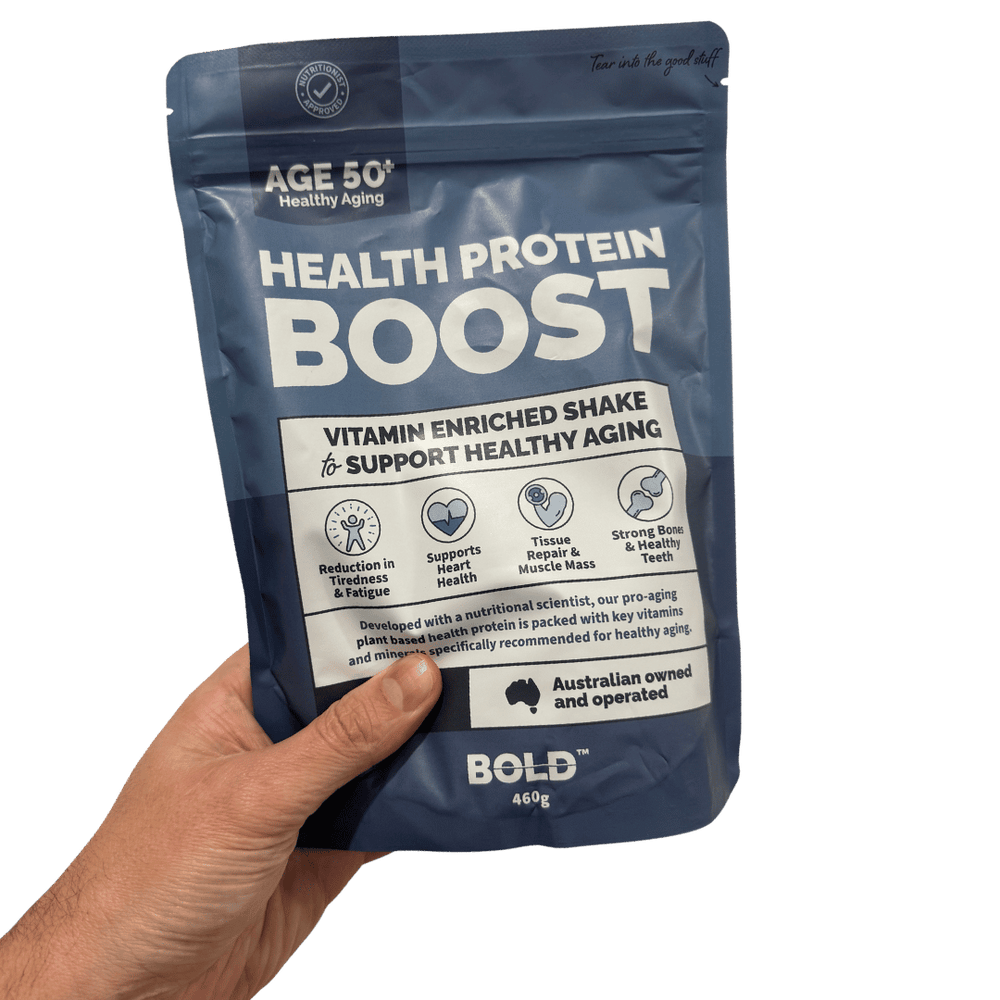What Are GLP-1 Agonists? How They Work for Weight Loss and Diabetes with Nutrition Tips
GLP-1 agonists like Ozempic and Wegovy have become widely used for managing type 2 diabetes and supporting weight loss. But how do they actually work, and what should you know if you're using them? Here’s a clear, straightforward guide + why Protein BOOST is the ideal partner for any GLP-Agonist
💊 What Are GLP-1 Agonists?
Let’s start with the basics—GLP-1 agonists are medications that act like a natural hormone in your gut, helping your body manage blood sugar and hunger.
GLP-1 (glucagon-like peptide-1) agonists mimic a hormone that regulates blood sugar, digestion, and appetite. 🧠🍽️
Popular ones include:
-
Ozempic / Wegovy (semaglutide)
-
Victoza / Saxenda (liraglutide)
-
Trulicity (dulaglutide)
Originally made for type 2 diabetes, they’re now rocking the weight loss world too! 💃🕺
How Do GLP-1 Agonists Work?
These medications help the body in a few key ways:
-
Increase insulin production when your blood sugar levels rise
-
Slow down digestion, which helps you feel full longer
-
Reduce appetite by acting on areas of the brain that control hunger
Together, these effects help lower blood sugar and support weight loss.
What Are the Benefits?
The popularity of GLP-1 agonists is largely due to the wide range of health benefits they offer, including:
-
Better blood sugar control
-
Significant weight loss for many users
-
Reduced risk of heart problems like heart attack and stroke
-
Possible brain health benefits, including reduced risk of Alzheimer’s (based on early research)
Why Nutrition Still Matters
Because GLP-1 agonists reduce appetite and slow digestion, many people eat less while using them. While this supports weight loss, it can also lead to nutrient deficiencies if you're not careful.
To stay healthy, it's important to focus on:
-
Protein intake – Helps prevent muscle loss
-
Essential vitamins and minerals – Especially vitamin D, B12, calcium, and magnesium
-
Hydration and fiber – Important for digestion and overall wellness
Why Protein Is So Important
One common side effect of reduced appetite is unintentionally eating too little protein. Without enough protein, your body may break down muscle instead of fat—which can lead to weakness, fatigue, and slower metabolism.
Protein helps by:
-
Preserving muscle mass during weight loss
-
Stabilizing energy levels and blood sugar
-
Maintaining a healthy metabolism
-
Preventing fatigue and supporting recovery
How Bold Health Protein Plus Can Help
If you're using Ozempic or another GLP-1 medication, Bold Health Protein Plus is a convenient way to support your nutrition and health goals. It's high in protein and has all the recommended vitamins and nutrients you need to maintain good health + it's low in calories and sugar ✅✅✅ All-in-one Goodness!
It’s designed to:
-
Provide easily digestible, plant-based protein to support muscle maintenance
-
Include gut-friendly ingredients like prebiotics and digestive enzymes
-
Supply key nutrients like vitamin D, B12, calcium, and magnesium
-
Support heart health with vegan omega-3 DHA
-
Be flexible and easy to use in shakes, smoothies, or meals
How Much Protein Do You Need?
For people using GLP-1 medications, experts generally recommend 1.2 to 2.0 grams of protein per kilogram of body weight each day, depending on your activity level.
So if you weigh 65KG, you should be getting between 75grams and 130grams everyday, and it doesn't matter if you are male or female.
And you should try and split that across the day, so 25-40 grams in the morning, midday and afternoon/evening.
🚀 Final Thoughts
GLP-1 agonists are game-changers for managing diabetes and dropping pounds—but nutrition still matters. Fuel up right and feel your best 💥
And hey, if you’re on Ozempic, Bold Health Protein Plus might just be your secret weapon for staying strong, nourished, and on track 🙌
Looking for more scientific detail? Read on
How Do GLP-1 Receptor Agonists Work?
Glucagon-like peptide-1 (GLP-1) receptor agonists are a class of medications that mimic the action of the endogenous hormone GLP-1, which is released in response to nutrient intake.
These drugs enhance glucose-dependent insulin secretion from pancreatic β-cells, meaning they stimulate insulin release only when blood glucose levels are elevated, thereby reducing the risk of hypoglycemia. They also suppress glucagon secretion, a hormone that raises blood sugar, further contributing to glycemic control.
In addition to their effects on pancreatic function, GLP-1 agonists delay gastric emptying, slowing the rate at which food leaves the stomach. This not only leads to a prolonged sensation of fullness (satiety) but also reduces postprandial glucose spikes. Furthermore, these agents act on the hypothalamus and other brain regions involved in appetite regulation, decreasing hunger and overall caloric intake.
These combined actions help improve glycemic control and promote weight loss, which is particularly beneficial for individuals with type 2 diabetes or obesity.
The Role of Protein Intake
Adequate protein intake is especially important when using GLP-1 receptor agonists, as these medications can lead to significant reductions in appetite and food intake.
Without careful dietary planning, this may result in a calorie deficit that compromises lean body mass. Protein is crucial for preserving muscle mass, supporting metabolic health, and aiding in tissue repair—especially during periods of weight loss.
Additionally, protein has a high thermic effect and promotes satiety, complementing the appetite-suppressing effects of GLP-1 agonists. Ensuring sufficient protein consumption can therefore enhance the efficacy and safety of these medications while supporting long-term health outcomes.


